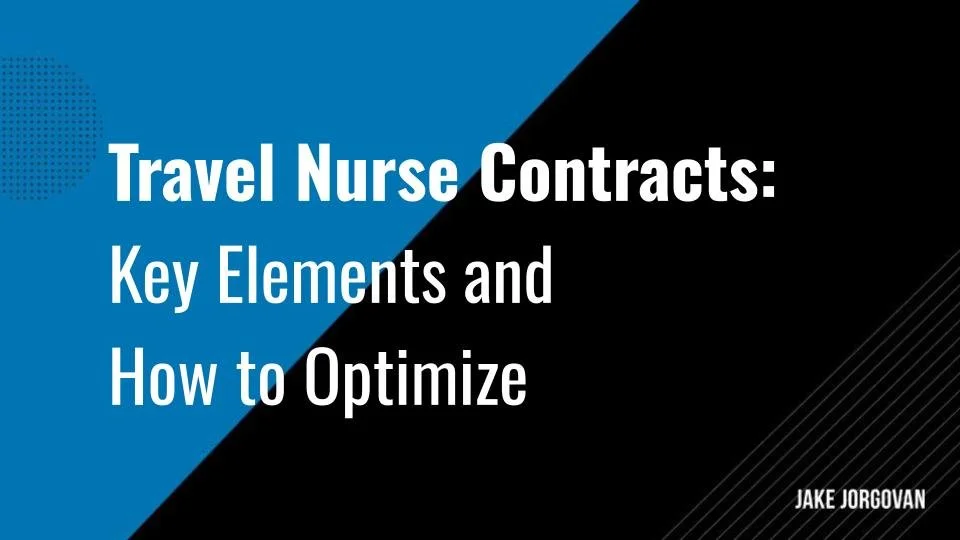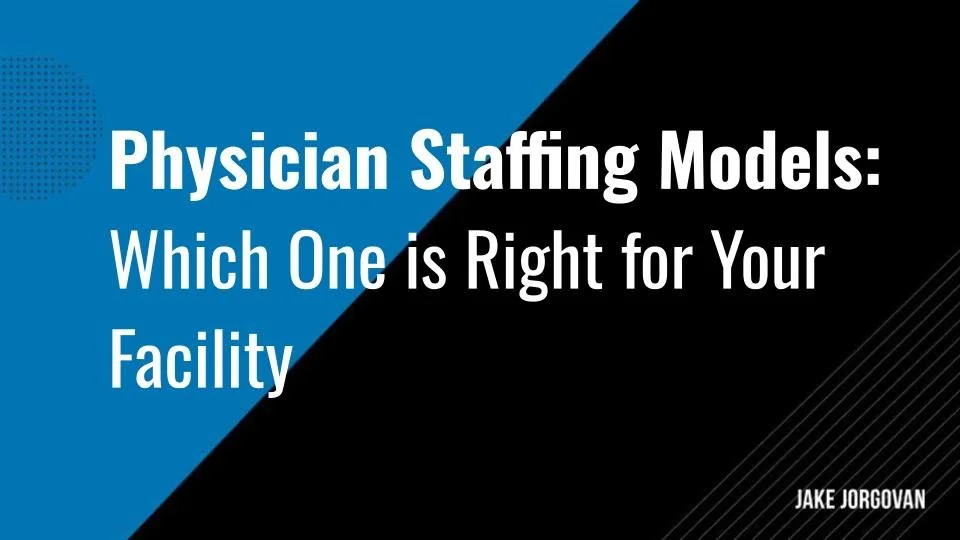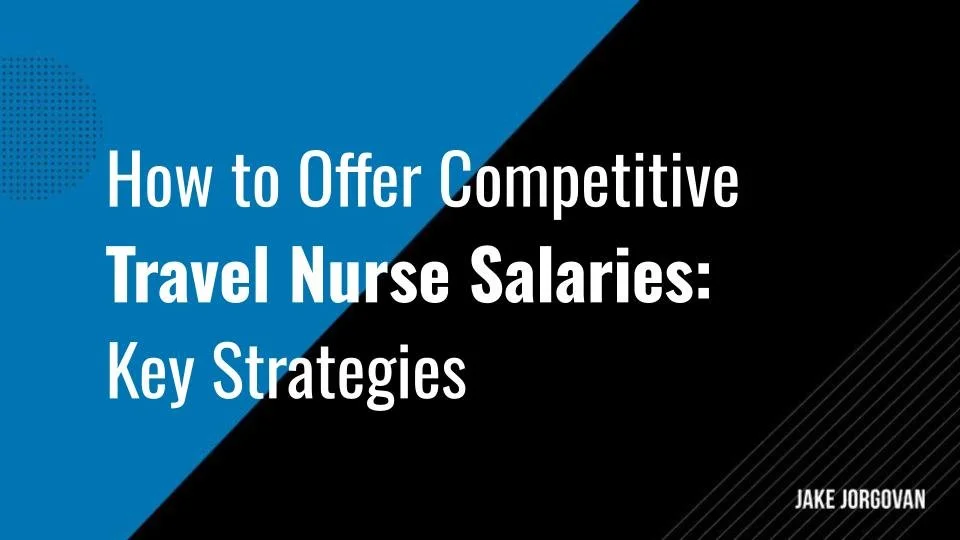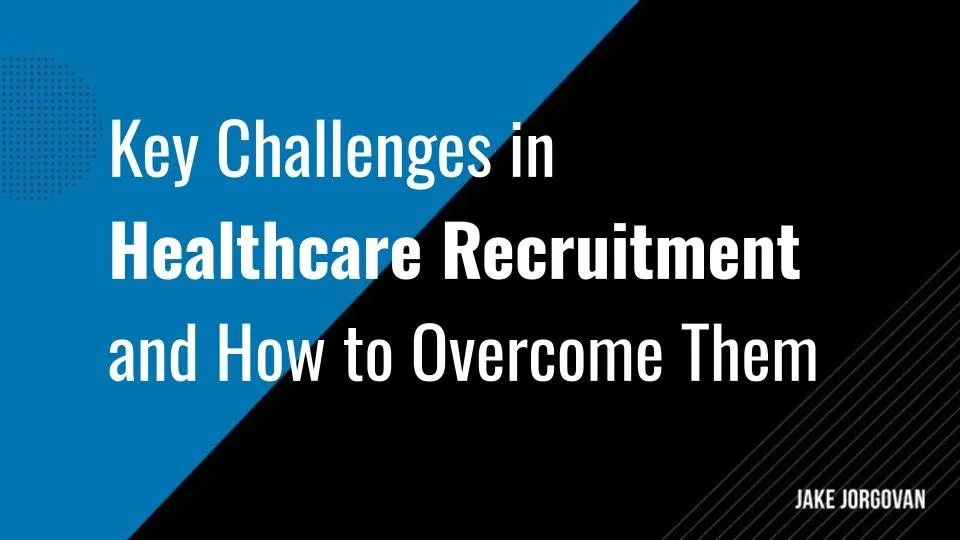Amplifying Healthcare Recruitment: How to Build a Strong Employer Brand
Healthcare is a very competitive niche right now. Employment in the healthcare sector is pretty much always at a talent shortage, and this problem is growing arguably faster than the average rate. Attracting top healthcare talent remains a significant challenge.
In fact, a 2023 survey from Staffing Industry Analysts found that 87% of healthcare organizations report difficulty in finding qualified candidates.
The future holds hard times for staffing in the healthcare sector, especially when it comes to nursing personnel and medical doctors. Nurse practitioners are expected to be in a shortage of 4.5 million and doctors at 1.9 million by 2030.
How can your organization prepare for future challenges in healthcare recruitment? How can you build a good program that creates a strong employer brand?
That’s what we’ll discuss here.
This employer brand is more than just a logo or tagline; it’s the core of your organization. Healthcare recruitment relies heavily on a positive, compelling brand image.
Qualified candidates seek workplaces with strong values, clear missions, and supportive cultures.
Luckily, you’re reading the right piece.
This article explores strategies for amplifying your healthcare recruitment efforts through effective employer branding.
Get ready to transform your hiring process and attract the best talent in the healthcare industry.
The Importance of a Strong Employer Brand for Healthcare Recruitment
Almost half of the employees in the United States and the United Kingdom (46%) say they are considering leaving their jobs because the companies they work for do not fit their values. This is why having a clear and strong sense of organizational identity is so important. This brand will encompass the values and goals of your organization.
Additionally, it makes it easier for healthcare recruiting firms and professionals to look for better-suited candidates. 83% of employers stated that the employer brand plays a role in the ability to hire talent.
And 75% of possible candidates research your organization's brand and reputation before applying.
So, having a strong employer brand in healthcare recruitment increases your chances of attracting top talent and retaining skilled professionals. Your brand defines how potential hires perceive your organization, and it reflects your values, culture, and work environment.
Here’s why:
A strong employer brand differentiates you from competitors. It makes your organization more appealing to job seekers. That means they are more likely to choose your company over others. This advantage is especially important in a competitive field like healthcare.
Your employer brand influences employee satisfaction and engagement. When employees are proud of where they work, they perform better. They are more motivated and committed to their roles. This leads to higher productivity and better patient care.
Your brand also impacts retention rates. According to the most recent turnover statistics, employees stay longer when they feel valued and aligned with the organization's values. This reduces turnover and the associated costs of hiring and training new staff. Long-term employees bring stability and continuity to your team.
A positive employer brand enhances your reputation in the healthcare industry. It builds trust with patients and the community. People prefer healthcare providers with a strong, positive reputation. This trust translates into patient loyalty and increased referrals.
Investing in your employer brand helps you attract diverse talent. Diversity enriches your team with different perspectives and ideas. It leads to innovation and improves problem-solving. Additionally, a diverse workforce can better serve a diverse patient population.
5 Strategies for a Strong Employer Brand in Healthcare Recruitment
So, how exactly does your organization build a strong employer brand that helps its healthcare recruitment strategies?
These are the changes your organization can make right now to start seeing results in the quality of candidates and employee retention.
1) Potential Candidates Are Looking for Employee Testimonials
Building a strong employer brand in healthcare recruitment demands showcasing real-life employee experiences. This is what attracts quality candidates.
According to industry studies, earned media (such as testimonials and word-of-mouth) has a 92% trust rate, as it's seen as more authentic coming from third parties.
This is why highlighting genuine testimonials can resonate deeply with prospective hires and demonstrate your organization’s authentic work culture.
Follow these steps to leverage employee stories effectively:
Identify key employees: Choose employees across various roles who represent the diversity and strengths of your organization. Select those with compelling stories and a willingness to share their experiences.
Conduct in-depth interviews: INC reported that 69% of job seekers would turn down a job offer if they found the company culture to be a poor fit. A good way to showcase your company culture and get the best fit is by asking open-ended questions about the employee's journey, challenges, and achievements. Also, ask how they perceive your organization’s support. Capture authentic narratives that reflect the employee’s genuine feelings and experiences.
Create and distribute content: Transform interviews into various content formats such as videos, blog posts, and social media snippets. Distribute the content on your website, social media channels, and recruitment portals. Utilize platforms frequented by your target audience to maximize visibility and impact.
Update regularly: Keep the content fresh by regularly featuring new employee stories on your website and social media profiles. Schedule updates to coincide with key recruitment periods or organizational milestones.
How To Ask For Health Employee Testimonials
Building a testimonial page from scratch or asking for testimonials from doctors, nurses, and other employees in your organization can sound difficult. What questions should you ask, and how do you approach them?
The key is seeing them as clients and understanding this interaction as social media and website content. Follow social media management best practices to leverage these testimonials to attract quality candidates.
Showcase The Quality of the Space and Perks
We recommend creating a dedicated “Day in the Life” video series or pictures that can show your healthcare facility and its perks.
Showcase different roles within your organization, too. This highlights the variety of positions and, more importantly, provides potential hires with a realistic glimpse into their potential future with you. Utilize high-quality production to make these videos compelling and informative. This captures the essence of each role and the overall work environment.
2) Showcase a Commitment to Professional Development and Continuous Learning
Promoting a culture of continuous learning in healthcare attracts top talent and also keeps your team at the forefront of medical advancements. Building this culture involves strategic initiatives that demonstrate your commitment to professional growth.
And you need a good plan, like so:
Firstly, assess training needs. Identify the specific skills and knowledge gaps within your team. Use surveys, performance reviews, and industry trends to determine improvement areas. Tailor your training programs to address these needs.
A survey by the Association for Talent Development (ATD) found that organizations that conduct needs assessments before implementing training programs see a 24% higher return on investment. By applying these first assessments, your organization will save money, resources, and time and create better training that your staff actually needs.
Then, develop training programs that work. Create programs that cover various aspects of healthcare, from clinical skills to soft skills. These programs should include online courses, workshops, seminars, and on-the-job training.
Start by defining the goals, then develop an outline that will define the key points of your program. Develop the actual content and conduct a training test, preferably with a small control group. Lastly, ask for feedback and implement evaluation to see the effectiveness of the training course.
Leverage technology and learning management systems (LMS) to deliver, track, and assess training programs. Implement virtual reality (VR) and simulation tools for practical training. These technologies provide immersive and interactive learning experiences.
Encouraging mentorship will make your continued training efforts more effective. Pair experienced professionals with newer employees. This mentorship creates knowledge transfer and professional growth. Organize regular mentorship meetings and feedback sessions.
Listen to What Current Employees Have To Say
It’s helpful to organize “Innovation Days” where nurses and doctors can present new ideas or research findings.
This encourages a culture of learning and innovation. It also allows employees to showcase their expertise and contributions, boosting morale and engagement.
3) Make Work-life Balance and Employee Wellness Part of The Employer Brand
Burnout remains alarmingly high in healthcare. A survey found that over 50% of physicians experience at least one symptom of burnout, which affects the work-life balance of healthcare professionals.
With doctors, nurses, and other medical practitioners sleeping less than 7 hours per night, having inadequate sleeping habits, and experiencing burnout, your recruitment strategy needs to focus on the benefits of work-life balance.
Promoting work-life balance and employee wellness is crucial in healthcare, where burnout and stress are common. Creating a supportive environment improves job satisfaction and retention rates.
Follow these steps to build a culture that prioritizes employee well-being:
Assess current workloads: Evaluate your staff's workloads to identify areas of excessive pressure. Conduct anonymous surveys and one-on-one meetings to gather honest feedback. Address imbalances by redistributing tasks or hiring additional support.
Implement flexible scheduling: Introduce flexible work hours and shift options. Allow employees to choose schedules that best suit their personal lives. This flexibility helps manage stress and improves overall job satisfaction.
Support mental health: Healthcare professionals experience mental health issues at higher rates than the general population. Studies consistently show elevated levels of depression, anxiety, burnout, and even PTSD among doctors, nurses, and other healthcare workers. In fact, the prevalence of depression among physicians is estimated to be around 28%, significantly higher than the general population. Provide access to mental health resources, including counseling services and stress management programs. Create a safe space for employees to discuss mental health issues without stigma. Train managers to recognize signs of burnout and intervene early.
Encourage time off: Advocate for the use of vacation days and personal leave. Develop a culture where taking time off is respected and encouraged. Avoid contacting employees during their time off to allow for complete disengagement from work.
Work-Life Balance Culture Attracts Talent
Company culture pages and other educational content around your organizational values are powerful tools for potential medical professionals interested in your company; they are more likely to attract top-quality candidates.
25% of candidates state that company culture is a big factor when it comes to choosing an organization to apply to. This ensures that they work with people who align with their vision and values.
Wellness Days For Healthcare Teams
We suggest instituting "Wellness Wednesdays," where employees can participate in various wellness activities such as yoga, meditation, or healthy cooking classes. This promotes well-being and also develops a sense of community within the workplace. We believe these initiatives significantly enhance your overall workplace culture.
4) Make Your Employer Brand Known by Engaging in Community Outreach
Engaging in community outreach and social responsibility initiatives strengthens your employer's brand in healthcare. Demonstrating a commitment to the community develops trust and loyalty among potential hires.
Start by researching local community issues and healthcare gaps. Engage with community leaders and organizations to understand their needs. Align your initiatives with areas where your organization can make a meaningful impact.
Create programs that address identified needs, such as health fairs, free clinics, or educational workshops. Partner with local schools, non-profits, and other healthcare providers. These collaborations enhance the reach and effectiveness of your initiatives.
This is the essential part: encourage staff to volunteer for community events and initiatives. Offer paid volunteer time or organize team-building activities around community service. This involvement increases employee morale and strengthens the connection between your staff and the community. Additionally, it will likely impact company culture and even attract new untapped talent.
Lastly, regularly assess the impact of your outreach programs. Gather feedback from community members and employees involved. Use this information to refine and expand your initiatives, ensuring they continue to effectively meet community needs.
Healthcare Community Impact Report
We recommend creating an annual community impact report. This document should detail your outreach efforts, outcomes, and future plans.
Sharing this report publicly showcases your ongoing commitment and provides transparency, further enhancing your reputation in the healthcare community.
5) Offer Competitive Benefits Tailored to Healthcare Professionals
Attracting and retaining quality talent in healthcare is a full-time job, and nurses and doctors are looking for ways to improve their lifestyles. A 2024 SHRM survey found that 92% of employees consider any type of health plan a crucial benefit. The average offer per year is 12 paid vacation leave days, 10 paid sick leave days, and 20 paid time off (pto) days.
Retirement plans are also determining benefits for employees of healthcare facilities. As a result, 81% of employers prioritize retirement plans (such as 401K) in their benefits package.
Meal breaks, social security, achievement awards, allowances, perks, bonuses, and pay raises also qualify as benefits.
Offering these competitive benefits and unique perks is essential for attracting and retaining top talent in healthcare. These incentives go beyond salary and help create a compelling reason for professionals to join and stay with your organization. Follow these steps to design a benefits package that stands out:
Conduct a market analysis: Research what other leading healthcare organizations offer. Understand healthcare industry standards and identify gaps in your current benefits. Use this data to benchmark your offerings against competitors. You can use any of these templates to benchmark your findings.
Include comprehensive health benefits: Provide health insurance plans that cover medical, dental, and vision care. Offer flexible spending accounts (FSAs) and health savings accounts (HSAs) for additional financial support. Consider adding mental health services and wellness programs.
Offer retirement plans: Implement attractive retirement savings plans such as 401(k) or 403(b) with matching contributions. Educate employees about the importance of retirement planning and the benefits of your plan.
Offer personal development: Companies with a strong learning culture have 2X employee retention rates compared to those without. That’s why providing professional development opportunities is crucial. And for the new generation of healthcare workforce this will be even more important. Studies show that 53% of Gen Z workers value learning for career progress. Support continuous learning through tuition reimbursement, scholarships, and paid time off for education. Offer in-house training programs and opportunities for certifications. This investment in professional growth shows your commitment to employee advancement.
Create unique brand perks: Introduce benefits that cater to work-life balance, such as flexible work schedules, remote work options, and generous paid leave. Include perks like childcare assistance, gym memberships, and wellness incentives. These unique offerings can set you apart from other employers.
Employee Surveys
We suggest conducting regular surveys to gather employee feedback on your benefits package. Ask questions about how valued the employees feel and what can be improved. Even have them rate the work-life balance. This will give you a good path for improving benefits in your organization.
Use this feedback to make data-driven adjustments and stay responsive to your team’s needs. This approach enhances satisfaction and also ensures that your benefits remain competitive and relevant.
Strengthen Your Employer Brand with Confidence
Put these tips into practice, and your employee's brand will help you scale your recruitment efforts. If you work on your brand culture, finding the right candidates and the hiring process itself becomes easy!
Remember that effective healthcare recruitment is not just about filling positions but attracting the right talent. But you need a strong employer brand first.
Your brand speaks volumes about your values and mission. Think about how your organization is perceived.
Are you a place where top talent wants to work?
Follow the five step-by-step strategies we outlined above to make sure the answer is ‘yes.’
The effort you invest in your employer brand today will shape your future healthcare workforce. Take the challenge and set your organization apart.
We are ready to help you with recruitment and headhunting projects in your organization. Contact us today and start seeing a change in your recruitment efforts.
FAQs
What are the 4 P's of employer branding?
The 4 Ps of employer branding are People, Purpose, Place, and Product. These define a solid framework for understanding and building a strong brand that attacks the right people for your company.
How is healthcare recruitment changing in 2025?
The demand for healthcare professionals continues to outpace supply, so recruitment is more competitive than ever. Candidates expect a seamless and positive experience throughout the recruitment process, from initial contact to onboarding. Technology will be playing a greater role in recruitment, with AI-powered tools, virtual interviews, and online platforms becoming increasingly common.
Additionally, healthcare organizations are recognizing the importance of building a strong employer brand to attract and retain top talent. Candidates are prioritizing work-life balance and seeking employers who offer flexible work arrangements and supportive cultures.
Why work with a healthcare recruiter company?
Recruitment companies have extensive networks and resources to reach qualified candidates that you might not be able to find on your own. A recruitment company can handle the initial screening and interviewing process, freeing up your internal team to focus on other priorities.
While there is a fee involved, using a recruitment company can be more cost-effective in the long run by reducing turnover and improving the quality of your hires.
What is medical branding?
Medical branding is the process of creating a unique and consistent identity for a healthcare organization. It's about effectively communicating your value proposition and building trust with patients, referring physicians, and the community.










































